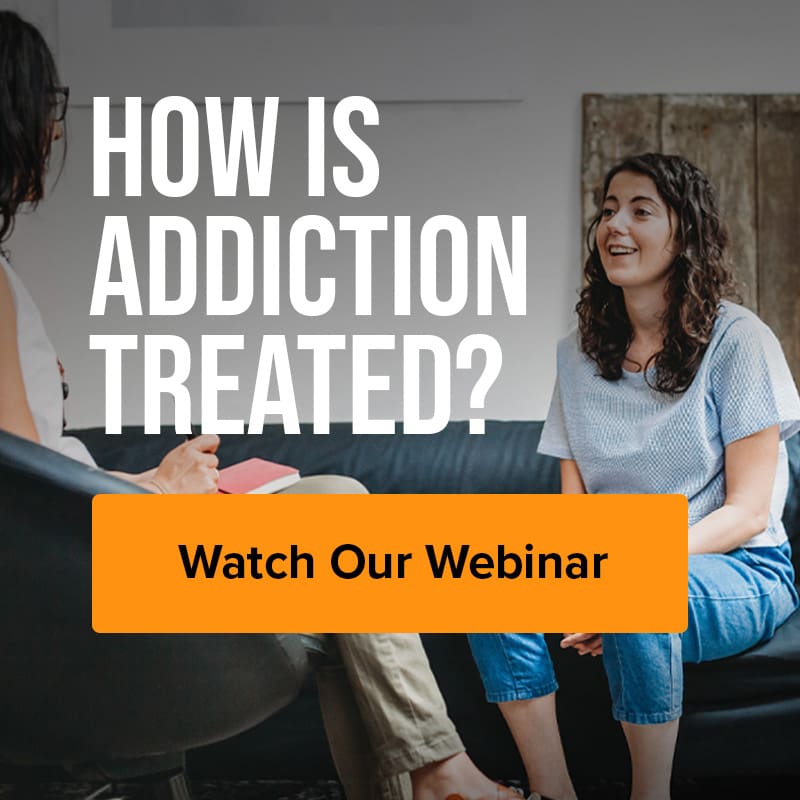Oxycodone has been making headlines for a few years, as more and more people struggle with this highly addictive painkiller. But many people are actually unaware of what this drug is, how it should be used, and why it’s so addictive.
This guide provides an in-depth overview of oxycodone, including how it compares to other opioids and how professional addiction treatment can help you get sober. Oxycodone abuse has serious consequences, but it’s possible to get sober with the help of experienced treatment professionals.
What Is Oxycodone?

Medical professionals use oxycodone to treat moderate to severe pain[1]. As an opioid, oxycodone binds to opioid receptors, depressing the central nervous system (CNS)[2]. This relieves pain by preventing the CNS from carrying pain signals to the brain from the spinal cord. Despite its classification as prescription medicine, oxycodone has become a major contributor to the opioid epidemic sweeping through Canada and other nations. Just because it’s prescribed by a doctor doesn’t mean it can’t cause harm, especially when an individual engages in oxycodone abuse.
When used recreationally, oxycodone has serious side effects, including an increased risk of overdose or addiction. The risk of adverse events increases when a recreational user combines oxycodone with a stimulant or another substance that depresses the CNS. For example, some users pair oxycodone with cocaine, causing the two drugs to interact with each other[3]. Certain medications combine oxycodone with other chemicals, further increasing the risk of harm. One example is Percocet, a combination of oxycodone and acetaminophen[4].
Recreational users may also abuse oxycodone with other opioids, making an overdose more likely. Oxycodone may be paired with oxymorphone hydrochloride (Opana ER), hydrocodone with acetaminophen (Hycet), or codeine containing acetaminophen (Tylenol #3 or Tylenol #4). The addition of another opioid painkiller increases the risk of respiratory depression and may make it difficult to breathe, even if the user hasn’t taken a fatal dose of oxycodone[5].
Pharmacies sell oxycodone for medical use, but recreational users may buy their oxycodone on the street, often under the street name Hillbilly Heroin. Other common street names for oxycodone include Berries, Killers, Percs, Roxis, Rims, Tires, Greenies, Oxycotton (a misspelling of the brand name OxyContin), and Oxy. Some people who engage in oxycodone abuse refer to oxycodone by certain brand names, such as Oxycet, a combination of oxycodone and acetaminophen. It’s also possible to buy oxycodone and other opioids online, making it easier to access addictive medications without getting a prescription from a medical professional.
The value of oxycodone purchased without a prescription depends on several factors, such as how many pills someone plans to take per day and the amount of oxycodone in each pill. For example, a 5mg pill costs less than a pill containing the maximum dosage.
Oxycodone Addiction Statistics

The use of oxycodone without a legitimate prescription has made the opioid crisis in Canada even worse. According to Statistics Canada, 9.6% of Canadians who reported using opioids during the previous year admitted that they’d developed habits that could be harmful to their health[6]. Based on data from the 2018 Canadian Community Health Survey, the rate of opioid addiction is higher in young men (ages 20-24) who have mental health conditions or abuse other substances.
Oxycodone and other opioids have addictive properties, so the opioid epidemic has reached every region of Canada. Hospitalization rates and opioid-related deaths are highest in Alberta, Yukon, British Columbia, and the Northwest Territories, however[7].
Types of Oxycodone Brands
Like other drugs, opioids and opiates come in brand names and generic versions. Xtampa ER and Oxaydo are both brand-name drugs containing oxycodone. Some opioid pain relievers combine oxycodone with acetaminophen or other substances. For example, each Oxycet pill contains a combination of oxycodone and acetaminophen, while Targiniq ER combines oxycodone with naloxone[8]. The addition of other substances to an oxycodone pill can lead to a more intense high or change the way oxycodone makes a user feel, leading to more frequent abuse.
OxyContin
OxyContin contains oxycodone, but there’s a major difference between the two drugs. Oxycodone starts working within just a few minutes and lasts for approximately three to six hours[9]. In contrast, Oxycontin comes in an extended-release formula that relieves pain for up to 12 hours. People who engage in oxycodone abuse may use both forms of the drug or stick with either OxyContin or oxycodone.
Percocet
Oxycodone and Percocet both have the properties of opiate drugs, allowing them to produce the same level of pain relief. What makes them different, however, is that Percocet contains acetaminophen. Percocet was invented to give patients better pain relief than they could achieve with oxycodone alone. Although doctors often prescribe Percocet for post-surgical pain, you should know that taking this drug may increase the risk of seizures due to CNS depression[10]. Overdosing on Percocet may also cause liver damage[11].
Percodan
Percodan contains oxycodone and aspirin. Like Percocet, this drug provides two types of pain relief to help patients better control their pain.
Oxycodone Abuse and Addiction
As one of the most potent opioids available, oxycodone has been linked to drug abuse and addiction. One of the reasons this drug has such a high addictive potential is that it can stay in your body for long periods of time. When you first start using oxycodone, you may experience a rush of endorphins that creates a euphoric feeling. After a long period of abuse, your body doesn’t produce the same amount of endorphins each time you take a dose. That means you need to take more and more oxycodone to get the same rush you used to get from a much smaller amount[12].
If you try to eliminate oxycodone from your system, you may experience withdrawal symptoms that make it difficult to stop using the drug. This occurs when you’ve crossed the threshold from opioid tolerance to opioid dependence[13]. Unless you seek treatment, opioid abuse eventually turns into opioid addiction, increasing the risk of overdose and other adverse events. When you’re addicted to oxycodone, you may even snort the drug or engage in other harmful behaviours to avoid withdrawal symptoms, compounding the amount of harm done to your system.
Side Effects of Oxycodone Misuse
Oxycodone abuse typically causes the following side effects:
- Sleepiness
- Itchy skin or a general feeling of itchiness
- Constipation
- Dry mouth
- Headache
- Mood changes
- Flushing[14]
In some people, oxycodone abuse may cause the following severe effects:
- Hallucinations
- Agitation
- Severe nausea and vomiting
- Chest pain
- Irregular heartbeat
- Seizures
Long-term abuse of oxycodone increases the likelihood of experiencing withdrawal syndrome if you try to stop using the drug suddenly. If you go through withdrawal syndrome, you may feel like it’s difficult to breathe or experience changes in your heart rate[15]. The reason why oxycodone comes with so many warnings is that it can be highly addictive, especially if you already abuse other substances. Addiction increases the risk of tragic death, making it a serious problem that needs to be addressed with professional treatment.
Oxycodone vs. Other Opioids
When it comes to oxycodone versus other opioids, oxycodone addiction may cause more serious consequences due to the strength of the drug. Compared to tramadol and other opioid pain relievers, oxycodone is much stronger, so even a small dose can cause serious side effects. Despite the differences, tramadol and other opiates are also considered drugs of abuse.
Oxycodone vs. Tramadol
When compared to tramadol, oxycodone is a much stronger opioid. It takes effect quickly and lasts for several hours, increasing its addictive potential. Oxycodone is especially dangerous when paired with other substances, such as alcohol or cocaine, as multiple substances increase the risk of adverse events. Tramadol is typically prescribed to people experiencing moderate to moderately severe pain following invasive surgical procedures[16]. The extended-release version may be prescribed for patients who have chronic pain due to serious injuries or health conditions. People with substance use disorders may abuse both drugs to avoid withdrawal.
Oxycodone vs. Fentanyl
Fentanyl is one of the few opioids that are stronger than oxycodone. That doesn’t mean oxycodone isn’t a serious addiction risk, however. Using oxycodone more than prescribed or taking it without the supervision of a medical professional may cause serious side effects, including overdose and premature death. Often prescribed in a hospital setting, fentanyl relieves severe pain caused by surgery, advanced cancer, and other serious medical conditions[17]. In some cases, fentanyl patches are prescribed to people experiencing constant pain that doesn’t improve with other medications. Fentanyl has also been found in other drugs, such as cocaine, causing some people to abuse the drug without even realizing it.
Oxycodone vs. Morphine
Oxycodone is slightly stronger than morphine, an opioid typically given to patients who’ve been admitted to the hospital or come to the emergency department for treatment after a serious accident. Both drugs have addictive properties, but it’s easier to purchase oxycodone without a prescription. In a hospital setting, morphine is prescribed to control pain caused by surgical procedures. It’s also prescribed for people with severe arthritis, chest pain, and headaches that don’t respond to treatment with other pain relievers[18].
Oxycodone vs. Hydromorphone
Oxycodone is also stronger than hydromorphone, an opioid sold under the brand name Dilaudid. Like morphine, Dilaudid is often given in a hospital setting, as it’s useful for relieving pain caused by surgical procedures, terminal illnesses, and serious accidents. Even when it’s prescribed by a licensed medical professional, Dilaudid can cause many of the same side effects as oxycodone, including constipation, dry mouth, flushing, mood changes, and itching.[19]
Seek Professional Help Against Oxycodone Addiction

If you have a serious addiction, residential treatment can help you withdraw safely from oxycodone and learn the coping skills necessary to live a sober life. Residential treatment also gives you access to a community of supportive people who understand how addiction affects every aspect of your well-being. Not only will you be able to connect with addiction treatment professionals, but you’ll also be able to form beneficial relationships with people who know what it’s like to have an addiction interfere with everything they hold dear.
Outpatient treatment makes it easier to transition from a residential treatment center back to your community. If you choose outpatient treatment, you’ll still have access to highly skilled addiction treatment professionals and people who understand how difficult it can be to recover from serious oxycodone addiction. The main difference is that you’ll continue to work or attend school while you receive counselling and other supportive services.
Individualized Addiction Treatment
An addiction treatment plan should be highly individualized to address the physical, social, and psychological factors that triggered your addiction. For example, if you’re healing from family trauma or have a chronic health condition that makes it difficult to maintain employment, getting professional addiction treatment can help you learn appropriate coping skills and find out how to overcome life’s challenges without using oxycodone or turning to other substances.
Oxycodone addiction has serious physical and psychological effects. EHN Canada operates multiple treatment centers, increasing access to residential treatment and outpatient drug rehab. We treat individuals and families, with specialized addiction treatment services available to members of the military and first responders. In addition to our addiction treatment programs, we also offer eating disorder treatment, programs for people with behavioral addictions, and treatment for bipolar disorder, post-traumatic stress disorder, and other mental health conditions.
It’s common for someone with an addiction to oxycodone to have a co-occurring mental health disorder, such as PTSD or depression, so we conduct a thorough assessment to determine which services are most likely to help you overcome your oxycodone addiction and improve your overall mental well-being. EHN Canada also takes a biopsychosocial approach to addiction treatment, ensuring that you have the tools you need to improve difficult family dynamics or address past trauma that continues to influence you today.
Begin your recovery today!
Call our helpline at 416-644-6345 or fill out the admission form on our website. Our experienced, compassionate staff members are ready to help you take the first step.
References
[1] Centers for Disease Control and Prevention. (2022, May 23). Opioid basics. Retrieved from https://www.cdc.gov/opioids/basics/index.html
[2] National Library of Medicine. (2022, March 21). Oxycodone. Retrieved from https://www.ncbi.nlm.nih.gov/books/NBK482226/
[3] Peavy, K.M., Banta-Green, C., Owens, M. (2021, April). Opioids and stimulants: What are they and how are people using them? Retrieved from https://adai.uw.edu/pubs/pdf/2021opioidsstimulants.pdf
[4] American Society of Addiction Medicine. (n.d.). Opioids: Brand names, generic names, & street names. Retrieved from https://www.asam.org/docs/default-source/education-docs/opioid-names_generic-brand-street_it-matttrs_8-28-17.pdf?sfvrsn=7b0640c2_2
[5] Boom, M., Niesters, M., Sarton, E., Aarts, L., Smith, T.W., & Dahan, A. (2012). Non-analgesic effects of opioids: Opioid-induced respiratory depression. Current Pharmaceutical Design, 18(37): pp. 5994-6004. Retrieved from https://pubmed.ncbi.nlm.nih.gov/22747535/
[6] Carriere, G., Garner, R., & Sanmartin, C. (2022). Significant factors associated with problematic use of opioid pain relief medications among the household population, Canada, 2018. Retrieved from https://www150.statcan.gc.ca/n1/pub/82-003-x/2021012/article/00002-eng.htm
[7] Belzak, L., & Halverson, J. (2018). Evidence synthesis – The opioid crisis in Canada: A national perspective. Health Promotion and Chronic Disease Prevention in Canada, 38(6), pp. 224-233. https://www.ncbi.nlm.nih.gov/pmc/articles/PMC6034966/
[8] American Society of Addiction Medicine. (n.d.). Opioids: Brand names, generic names, & street names. Retrieved from https://www.asam.org/docs/default-source/education-docs/opioid-names_generic-brand-street_it-matttrs_8-28-17.pdf?sfvrsn=7b0640c2_2
[9] National Library of Medicine. (2022, March 21). Oxycodone. Retrieved from https://www.ncbi.nlm.nih.gov/books/NBK482226/
[10] U.S. Drug Enforcement Agency. (2022). One pill can kill. Retrieved from https://www.dea.gov/onepill
[11] National Library of Medicine. (2020, November 24). LiverTox: Clinical and research information on drug-induced liver injury. Retrieved from https://www.ncbi.nlm.nih.gov/books/NBK547955/
[12] Mayo Clinic. (2022). How opioid addiction occurs. Retrieved from https://www.mayoclinic.org/diseases-conditions/prescription-drug-abuse/in-depth/how-opioid-addiction-occurs/art-20360372
[13] Kosten, K.R., & George, T.P. (2002). The neurobiology of opioid dependence: Implications for treatment. Science & Practice Perspectives, 1(1), pp. 13-20. Retrieved from https://www.ncbi.nlm.nih.gov/pmc/articles/PMC2851054/
[14] MedlinePlus. (2022) Oxycodone. Retrieved from https://medlineplus.gov/druginfo/meds/a682132.html
[15] CAMH. (2020). Straight talk – oxycodone. Retrieved from https://www.camh.ca/en/health-info/guides-and-publications/straight-talk-oxycodone
[16] Mayo Clinic. (2022, July 1). Tramadol (oral route). Retrieved from https://www.mayoclinic.org/drugs-supplements/tramadol-oral-route/description/drg-20068050
[17] Centers for Disease Control and Prevention. (2022, February 23). Fentanyl facts. Retrieved from https://www.cdc.gov/stopoverdose/fentanyl/index.html
[18] National Library of Medicine. (2022, June 20). Morphine. Retrieved from https://www.ncbi.nlm.nih.gov/books/NBK526115/[19] MedlinePlus. (2022). Hydromorphone injection. Retrieved from https://medlineplus.gov/druginfo/meds/a601148.html




